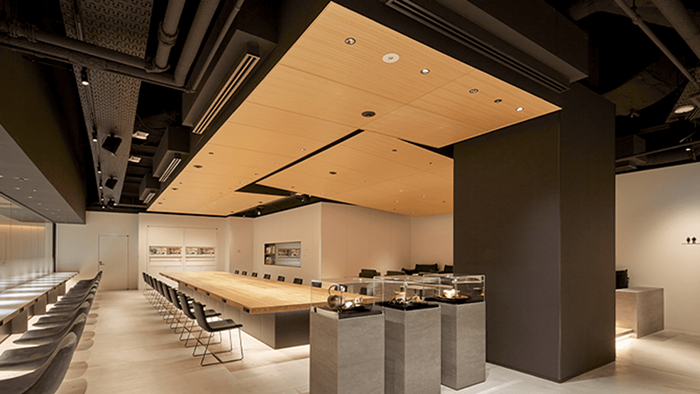
There have been 노래방알바 구인 substantial shifts in the roles that women play in the Japanese workforce over the course of the last few decades. Historically, the primary role of a Japanese woman was that of a housewife who helped her husband advance his profession. Women’s involvement in the labor market, on the other hand, has been progressively increasing thanks to Japan’s fast economic development and cultural shifts in recent decades. Women in Japan are actively participating in the workforce and making contributions across a wide range of economic fields nowadays.
In spite of these achievements, there are still gender gaps, most notably in terms of the separation of women and men in the workforce. There is no one particular occupation that can be considered the most frequent choice for all Japanese women, although several professions have witnessed a much larger percentage of female representation than others. This article will discuss the advancements that Japanese women have achieved in the workforce as well as throw light on professions in which they are well-represented.
Some Historical Context Regarding Japan’s Traditionally Assigned Roles for Men and Women
The work environment for women in Japan has been significantly influenced by the traditional gender norms that have been maintained throughout the country’s history. In the past, Japanese culture adhered to a rigorous gender-based division of work, which came to be known as the “separate-spheres doctrine.” This philosophy placed a strong emphasis on the male breadwinner paradigm, which held that men should maintain careers outside the house and be the primary providers of financial support for their families. On the other hand, women were largely responsible for household tasks and the upbringing of children in traditional societies.
This traditional way of thinking remained long into the 20th century, making it difficult for women to get an education and pursue professional prospects. Changes in gender roles, on the other hand, came about gradually as a result of cultural transformations that occurred after World War II and a growing influence from the West.
Shifts in Society: Altering Attitudes Toward Women’s Workplace Participation
Over the course of the last several decades, Japan has been witness to substantial developments in the views held by society about the employment of women. Historically, it was expected of Japanese women to place a high priority on their duties as wives and mothers, and as a result, they typically had little opportunity to grow in their careers. In spite of this, more Japanese women are now pursuing professional professions than ever before, thanks to the emergence of feminism and shifting societal norms. The most frequent careers undertaken by Japanese women nowadays encompass a broad variety of fields and businesses.
Others have moved into domains that were previously dominated by males, such as technology and finance, while others continue to gravitate toward industries that have historically been controlled by women, such as education and healthcare. This trend may be attributed, in part, to changes in employment rules that encourage gender equality as well as improved access to higher levels of education. Despite these encouraging improvements, obstacles still exist for women in the workforce in Japan in Japan.
Educational and Professional Opportunities Open to Japanese Women in Japan
Over the course of the last several years, Japan has made great progress toward the goal of expanding educational and career possibilities for women. The government has enacted measures to encourage more women to seek higher education and professional professions, with the goal of reducing the gender gap that exists in the workforce and closing the gap between the sexes. These days, women in Japan enjoy the same opportunities as their male counterparts in terms of access to high-quality education at all levels, which enables them to compete on an equal basis with males.
This has led to a move away from conventional gender norms, with more women joining professions that were formerly male-dominated such as technology, finance, and engineering. These initiatives have resulted in a varied variety of job possibilities for Japanese women and a progressive adjustment of cultural norms around female work. While there is still development to be done, the results of these efforts have been positive overall.

An Overview And Statistics Regarding The Job That Is Most Common Among Japanese Women
The position of office worker is the one that women hold in Japan at a higher rate than any other employment. This field of work comprises a broad variety of positions, such as administrative assistants, secretaries, and clerical workers. Office employment gives stability and regular working hours, which is generally favored by many Japanese women owing to cultural expectations around family duties. This is because office work provides stability and regular working hours. The most recent figures show that roughly forty percent of Japanese women are now working in office-related employment.
This number demonstrates the enormous strides that have been achieved throughout the years toward achieving gender equality in the workforce. However, despite these advances, there is still a significant income disparity between men’s and women’s work in Japan, and this fact is very essential to keep in mind.
Considerations That Come Into Play When Making Career Decisions for Japanese Women
There are a variety of considerations that go into the decisions that Japanese women make about their careers. To begin, the expectations of society as a whole as well as the conventions of a particular culture have a vital effect. Many traditional gender roles require women to prioritize their home chores; hence, many women choose to work in fields such as education, healthcare, and retail instead of fulfilling these tasks. Second, striking a healthy balance between one’s professional and personal life is essential for Japanese women, especially those who are married or who have children.
As a consequence of this, they often look for professions that have flexible working hours or positions that enable them to work part-time so that they may fulfill their responsibilities to their families. In addition, there is a significant gender wage difference as well as restricted access to leadership roles, all of which have an effect on the jobs that Japanese women select. The need for consistency and safety pushes individuals farther in the direction of seeking work in fields that are well-known for offering long-term career prospects and perks, such as the public sector or major enterprises.
Obstacles That Japanese Women Come Across While Working In The Workplace
In their working life, Japanese women face a variety of challenges, which slows down their advancement and reduces the number of employment choices available to them. It is common for traditional gender roles and cultural expectations to result in a significant gender gap in the workplace. One of the most severe challenges is the widespread practice of “matahara,” also known as maternity harassment, in which pregnant women endure discrimination, decreased possibilities for advancement, and even forced resignations. In addition, the expectation of long working hours and a demanding corporate culture often come into conflict with the obligations that come with having a family, which leaves many Japanese women striving to find a balance between their professional and home lives.
A further issue that contributes to the maintenance of a male-dominated hierarchy inside companies is the absence of female representation in positions of authority. These obstacles underline the need for substantial reforms that would create a work climate that is more inclusive and equal for Japanese women.
Concluding Remarks Regarding the Advancement of Japanese Women in the Workforce and Future Prospects
In conclusion, while historical gender norms and cultural expectations have, historically speaking, restricted the selection of job paths open to Japanese women, major advancements have been achieved in recent years. A shift in mentality toward gender equality may be seen in the growing number of women who are opting to pursue higher education and are entering the workforce. This favorable trend is also attributable, in part, to the efforts of the government and a variety of organizations to encourage diversity and inclusion.
However, there are still obstacles to be overcome, such as the elimination of cultural prejudices and the promotion of equal chances in the workplace. It will be essential to maintain support for policies that promote work-life balance, affordable childcare facilities, and the elimination of gender-based discrimination if Japanese women are to continue to make progress in their standing in the labor market.
